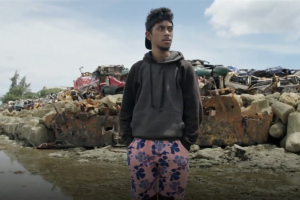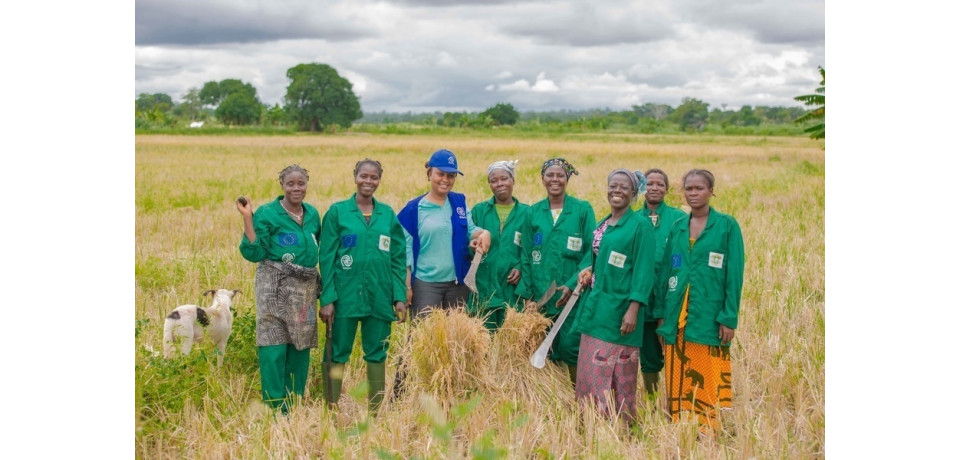Why Mainstreaming Migration into Development Cooperation Matters
Related Sustainable Development Goals and Global Compact for Migration Objectives
Brussels – The world is facing an unprecedented number of interlocking challenges. Growing inequality, the COVID-19 pandemic, rising levels of poverty, the climate crisis, and conflicts all impact global development. The United Nations (UN) Secretary-General has raised the alarm and is urging the international community toward collective actions to address these pressing challenges.
The Sustainable Development Goals (SDGs) are the roadmap towards tackling these challenges. However, the SDGs cannot be achieved without considering the important role of migrants and migration. Mainstreaming migration into international development cooperation in meaningful and effective ways will contribute to achieving wider development outcomes.
Education, rural development, employment, health; all these areas of development factored into Surja’s decision to leave Nepal.
“Like many of the families in rural Nepal, our family relied on agriculture for its livelihood. Our father was the breadwinner until he suddenly became sick, and he could no longer provide. I could no longer continue my education and dropped out. I turned 18 and left for Qatar to look for work to support my family,” says Surja.
Both development and a lack of development can impact migration and the way in which people migrate. Migration shapes our world.
Nearly 10,000km away in the Republic of the Marshall Islands, climate change is an existential threat to the islands and its inhabitants. Stronger high tides threaten the islands and recent droughts stress the Marshallese water supply.

“Scientists say we have until 2030 before it floods, because we are only two meters above water. That is two meters of cultures. Two meters of language. Two meters of legends and myths,” says Carlon from the Republic of the Marshall Islands.
Well-managed migration can contribute to improved sustainable development outcomes
We can achieve wider development outcomes like reduced poverty, good health and well-being, and decent work by actively considering, understanding, and taking action to address the ways that conflict, climate change, education, employment, and other sectors impact migration. The same is true in the reverse. When well-managed, migration is a powerful driver of sustainable development.
Returning migrants, for example, contribute significantly to their countries of origin by bringing new ideas, skills, entrepreneurial development and capital.
Joji and her husband made the decision to return to Mindanao, the second-largest island in the Philippines, which has experienced instability and armed conflict. Despite lacking a social support network in Mindanao, they started their social enterprise to provide a peaceful space for dialogue between the military and the rebels.

“We migrated to Canada in 1986 and I raised my children in Canada. I worked as a financial advisor and, in 2006, we returned to the Philippines… and established a social enterprise called ‘Coffee for Peace’. My husband and I wanted to give back to our country,” says Joji.
Taking Action: Integrating migration into development plans, polices, and projects for coherence and impact
When relevant policies, plans or projects consider the needs of migrants and the effects of migration on societies, we reduce the chances that migrants are put at risk, communities come under strain, and can ensure that development gains are maximized.
Much is already being done. The European Union (EU) is one of the largest contributors of aid in the world. The EU recognizes that mainstreaming migration is essential to ensure that interventions across all development sectors are coherent and to uphold commitments related to the 2030 Agenda and the European Consensus for Development.
The EU underscored the importance of migration by applying a 10 per cent indicative spending target for migration under the Neighbourhood, Development and International Cooperation Instrument (2021-2027) to translate commitments into concrete action.
Under the Mainstreaming Migration into International Cooperation and Development (MMICD) project funded by the European Commission’s Directorate General for International Partnerships (DG-INTPA), the International Organization for Migration (IOM) has been supporting the effective mainstreaming of migration into international cooperation and development.
The strength of this work has been integrating IOM’s cross-cutting expertise on migration into nine key development sectors through partnerships with UN agencies possessing the technical depth of expertise in these sectors (rural/urban development, environment and climate change, security, governance, employment, private sector development & trade, education and health).
After more than five years focused on mainstreaming migration, IOM is in a strong position to inform the work of ongoing and future interventions on migration and development. Here are five recommendations for how it should be done:
- Partnerships for Sustainable Development (SDG 17): advancing the migration-development nexus. Continue to advance UN-to-UN partnerships developed through the MMICD project. Take stock of the work of the UN Network on Migration. Identify key development actors such as the EU and EU Member States and explore synergies and potential entry points for mainstreaming migration, and build on Team Europe approaches where feasible.
- Recognize that whole of government approaches are critical to advance migration mainstreaming. Local/county governments play an increasingly important role in migration alongside national authorities.
- Be prepared to adapt the focus of where to mainstream migration depending on the context. Consider who the viable target beneficiaries are and the type of support that is needed, as well as the adaptations required for these different beneficiaries.
- Consult relevant stakeholders and beneficiaries to ensure that efforts made reflect needs and existing gaps. Ensure clear linkages between the identification of needs and the design of the response to those needs, actively engaging target stakeholders in the entire process.
- Consider all follow-up actions in the design of the intervention for improved sustainability. Consider how the interventions can contribute to changes in behaviour and actions and build in “bridges” to concrete follow-up actions that will enable migration mainstreaming in practice and not just theory.
Given the urgency and scale of today’s challenges, the fast pace of changes and the high stakes involved, international cooperation and development actors will need to take concrete steps to address the connections between migration and development. We must preserve the progress achieved so far, sustain the current momentum, and accelerate action.
By Alison Talkers and Tomas Ernst
Note: this blog is originally posted on weblog.iom.int
